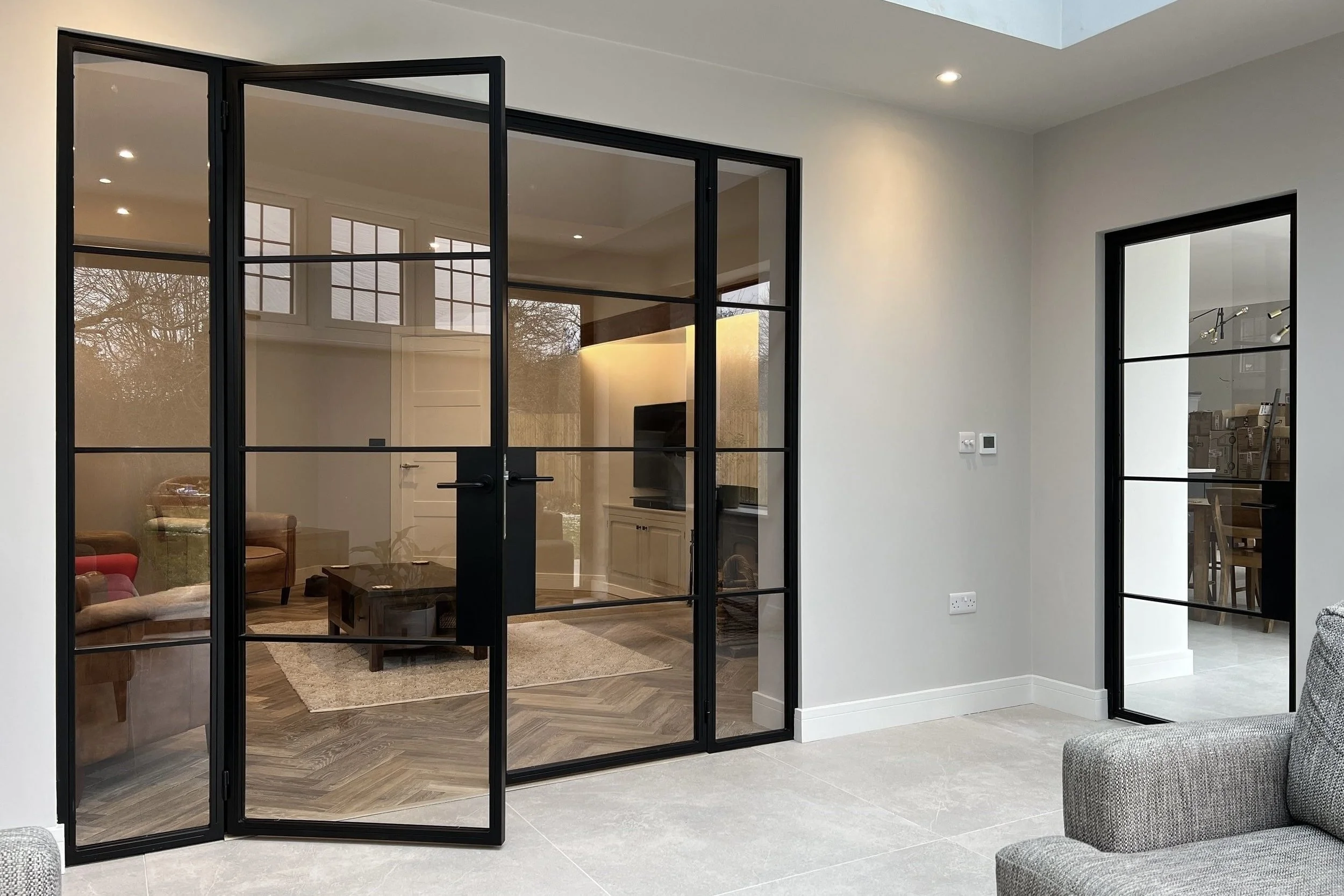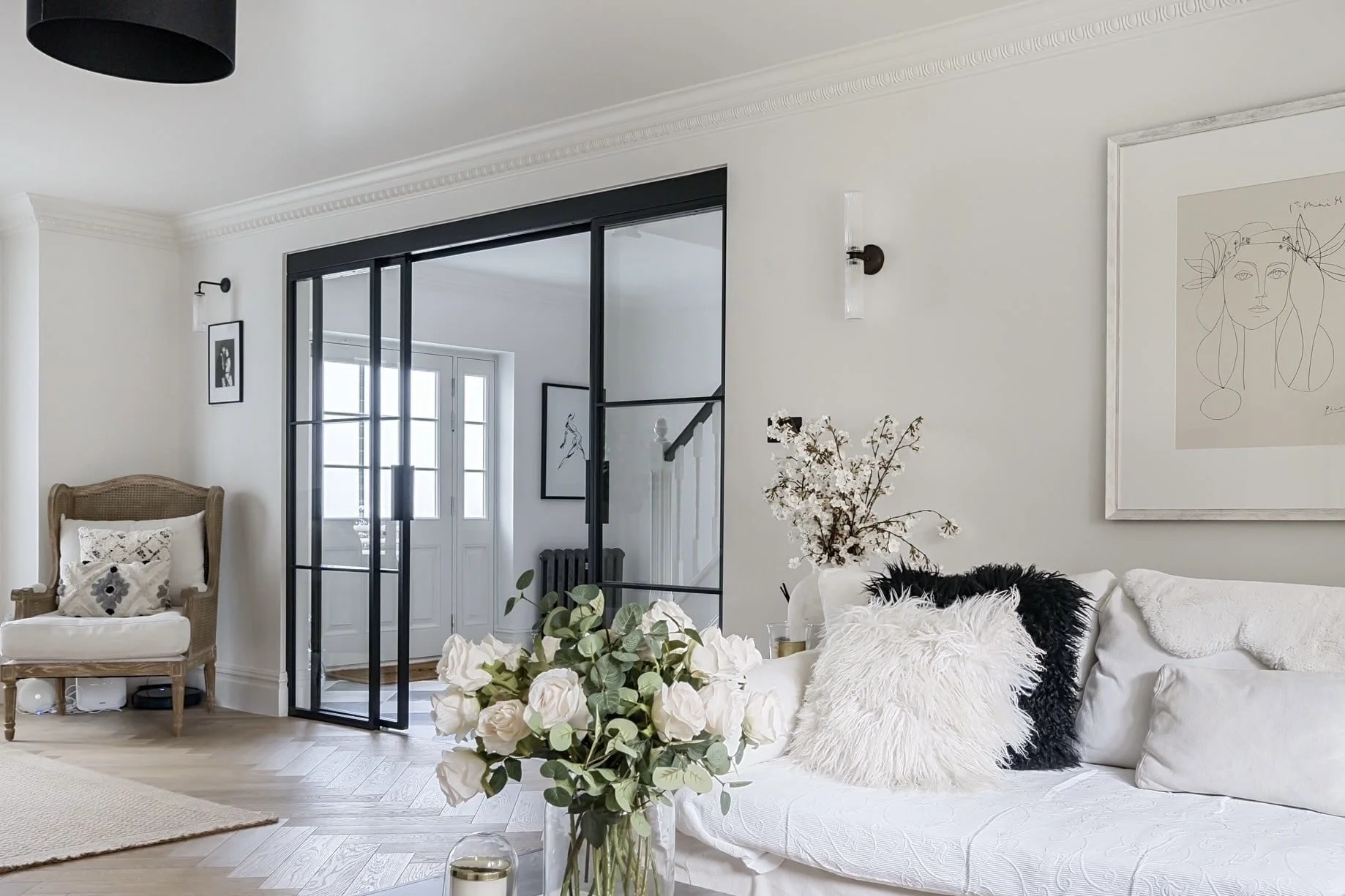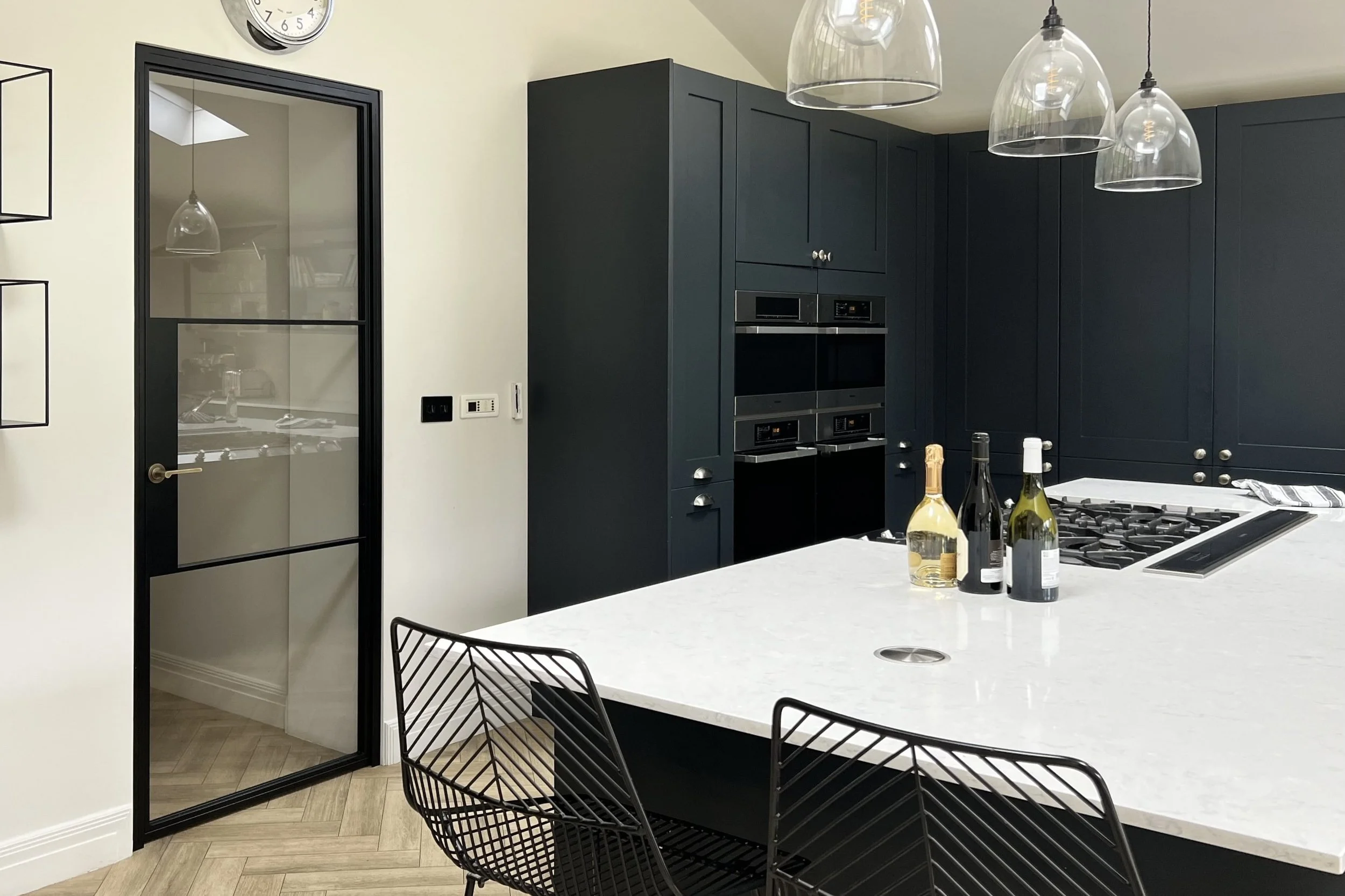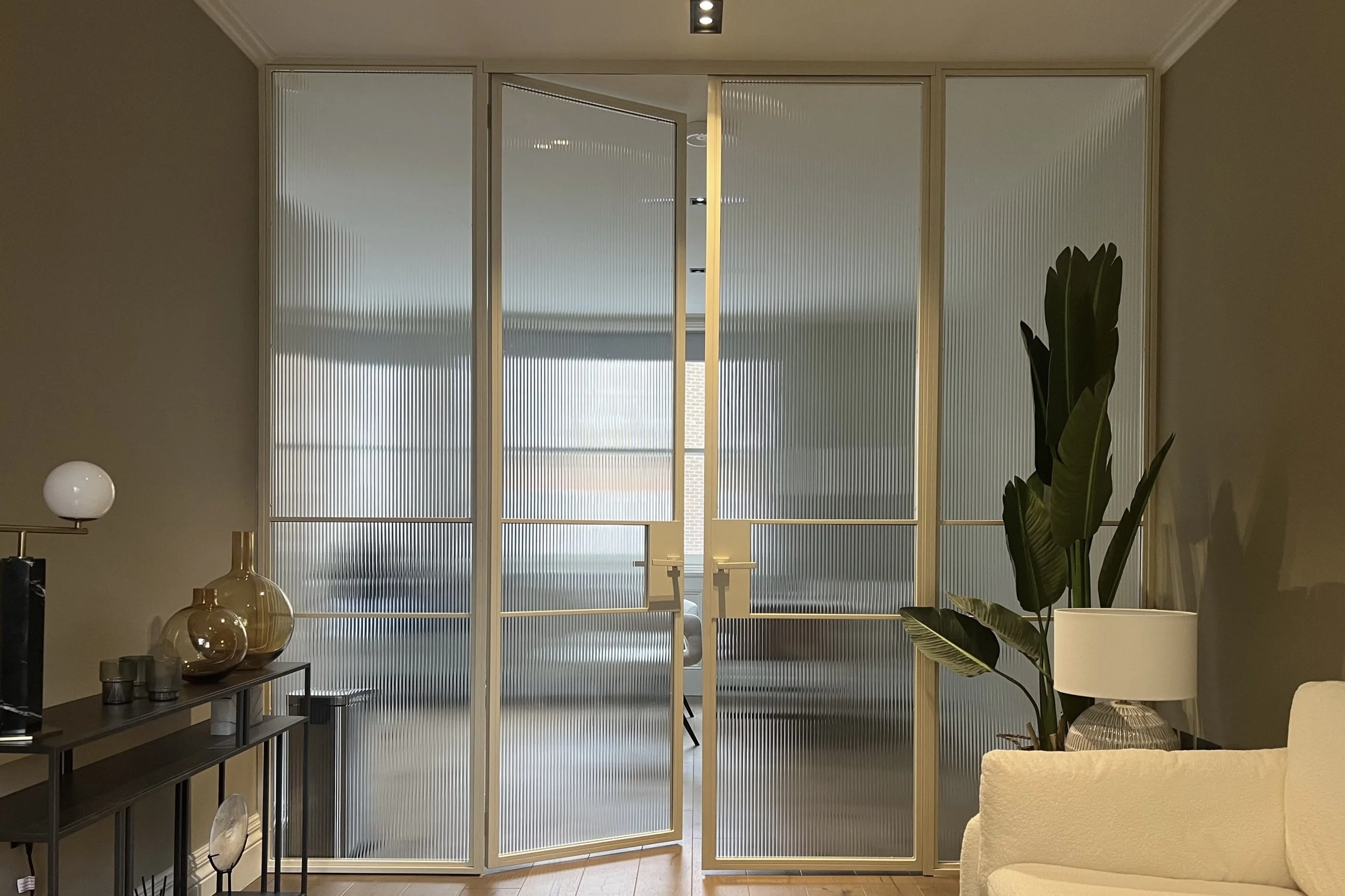Why Architects Specify Steel Internal Doors for Luxury Interiors
Introduction
In high-end architecture, the smallest details often define the overall impact. A steel internal door may seem like a modest design feature — but to those who specify, install, and live with them, it’s a mark of refinement.
Whether separating a hallway from an open-plan living space or creating glazed divisions between a kitchen and snug, internal steel doors offer architects and designers both aesthetic control and technical performance. While aluminium and timber doors have their place, steel provides unmatched precision, customisation, and long-term value.
Here’s why so many design professionals are turning to steel when delivering sophisticated interiors.
Slim Sightlines and Architectural Clarity
Steel’s inherent strength allows for much slimmer profiles than aluminium or timber. This means less frame and more glass — allowing natural light to pass freely between rooms, enhancing volume, openness, and flow.
In projects where interior glazing plays a key role — whether in townhouses, converted lofts or contemporary new builds — steel doors create clean divisions without cluttering sightlines. The result? A more connected and expansive interior that retains zoning and privacy where needed.
It also allows visual consistency across multiple rooms, which is especially valuable in open-plan homes. Instead of bulky transitions, steel framing becomes an elegant design element that links spaces together through symmetry and proportion — making steel single doors a smart choice for open-plan interiors.
Visual Harmony Across Styles
Steel internal doors adapt effortlessly to a wide range of architectural contexts.
They feel at home in Victorian properties with period features, just as much as they do in minimalist London apartments or countryside retreats with exposed stonework. With finishes ranging from classic Jet Black to bronze, warm neutrals or soft metallics, steel offers a versatility that few materials match.
Because each door is custom-made, even the finest details — like the edge radius, the shadow gap, or the reveal depth — can be tailored to suit the environment. Whether you're echoing existing mouldings or introducing contrast to ultra-modern interiors, steel gives you the design flexibility to get the balance just right.
By offering full control over glazing type, bar layout and hardware detailing, architects can specify doors that complement — rather than compete with — surrounding materials.
Customisation Without Compromise
Unlike modular aluminium systems, steel doors can be made to any specification.
At Joshua James, every door is fabricated from raw material — not clipped together from prefabricated profiles. This opens up a world of design freedom:
Unique bar layouts (horizontal, vertical, offset, or asymmetrical)
Non-standard shapes and oversized openings
Handle placements aligned with panelling or cabinetry
Fixed side screens, overpanels, or full glazed walls
Matching fixed partitions, corner details, and curtain wall-style features
You’re not selecting from a set of pre-designed options — you’re building the system around your brief. For architects working with complex spaces or highly detailed interior schemes, that’s an enormous advantage — and our bespoke double door sets are a perfect example of what fully tailored solutions can achieve.
Strength Enables Flexibility in Configuration
Because steel is significantly stronger than aluminium, it allows for a much wider range of functional configurations — without needing bulky profiles for stability.
At Joshua James, we can create:
Hinged steel doors with clean vertical sightlines
Sliding doors that conceal into wall pockets or stack neatly to one side
Bifold systems for larger openings
Pivot doors for a grander reveal
Or completely bespoke arrangements of doors and fixed screens
This flexibility is particularly valuable in renovations, where structural openings often vary and client requirements demand creative, adaptive solutions. Steel framing can follow these variations precisely — ensuring maximum glass and minimum obstruction. Browse our internal sliding steel door configurations to explore the possibilities.
A Solid Feel That Clients Instantly Recognise
Designing a space goes beyond the visual. How a material feels and responds under touch shapes a client's emotional connection to a home. Steel doors offer a tangible sense of substance and craftsmanship that clients notice the moment they interact with them.
The weight, the resistance as the door swings open, the quiet precision of the close — all contribute to the sense that this is a carefully considered detail, not an afterthought. Hardware is embedded cleanly into the structure, hinges are flush, and there is no creak, rattle, or wobble.
These tactile qualities do more than impress — they reinforce a sense of luxury and permanence. A lightweight aluminium door may serve the same function, but its lack of mass and audible vibrations often feel incongruent in high-spec homes. Clients quickly detect the difference.
In fact, during client showroom visits, it’s often the physical interaction with our steel doors that finalises a decision. That first-hand experience of solidity and motion leaves a lasting impression — it communicates quality more effectively than any brochure ever could.
Long-Term Stability and Minimal Maintenance
Steel doors are typically welded at all joints, creating a single, unified frame. This results in outstanding structural stability — especially over large spans or in high-use areas.
Because the system is rigid and monolithic, there’s no movement at the joints, no sagging hinges, and no realignment required as the door ages. This reduces maintenance not only for homeowners, but for the architects and builders responsible for post-handover quality.
By contrast, aluminium systems often require seasonal adjustments, as screws loosen or alignment shifts under use. Timber, even when treated, is prone to swelling, bowing and finish deterioration. Steel avoids all of these issues, making it the go-to for long-term performance. Discover our steel and glass room divider options for flexible, low-maintenance solutions.
Internal Glazing That Performs as Well as It Looks
Steel internal doors do more than connect or divide spaces — they also help control light, privacy, and atmosphere. With such a wide range of glazing options available, they allow architects and designers to fine-tune how each space feels, without compromising the aesthetic flow of the home.
From crystal-clear panes that let daylight spill between rooms, to reeded or frosted finishes that soften sightlines, glass selection becomes a vital part of the design. In media rooms or dressing areas, clients often seek a sense of enclosure, while still maintaining a connection to adjacent spaces — and steel-framed glazed doors make this easy.
Acoustics are another key factor. Whether separating a home office from a living room, or a bedroom from a hallway, laminated or acoustic glass within a steel frame creates a strong sound barrier — ideal for modern homes where multiple generations work, sleep, and relax at different times.
The ability to combine light control, privacy, and soundproofing — all while maintaining a visually cohesive language — is one of the biggest reasons steel doors are trusted in luxury interiors. Learn more about our fire-rated internal doors and screens that provide added performance without compromising on style.
A Responsible, Sustainable Choice
Steel is one of the most recyclable materials in the built environment — and because steel doors are engineered to last, they rarely need replacing.
This reduces both waste and cost over time. For clients seeking longevity and low-impact materials, steel makes a strong case — particularly when compared with aluminium systems that degrade faster, or timber systems that swell, chip or warp.
Beyond material sustainability, steel’s longevity contributes to a more circular design economy. Instead of replacing doors every 5–10 years due to wear or fashion shifts, steel installations become enduring elements of the architecture.
What Architects & Designers Should Consider
Specifying internal doors in a high-end residential project isn’t just about aesthetics — it’s about reliability, proportion, and how a space feels.
Steel allows design professionals to:
Achieve uninterrupted glazing with minimal frames — ideal for light flow and spatial clarity.
Create purpose-built solutions — from extra-tall pivot doors to seamless sliding partitions or integrated screens.
Ensure structural confidence — especially over larger spans, where aluminium or timber may fall short.
Elevate the user experience — with a solid, tactile feel that reinforces the home’s overall quality.
Support integrated design schemes — through custom layouts, matched finishes, and thoughtful transitions.
For architects and interior designers working on detail-led homes, steel internal doors are more than just a feature — they’re a mark of thoughtful, intelligent design.
Conclusion
For architects and designers delivering premium homes, every specification needs to balance form, function, and future-proofing.
Steel internal doors offer exactly that — a timeless design language with custom fabrication and rock-solid engineering. They don’t just divide rooms. They become part of the architecture.
At Joshua James, we work with design professionals across the UK to deliver fully bespoke steel doors — on time, to spec, and to the highest standard. From initial consultation to delivery, every detail matters.
Ready to specify steel internal doors?
Submit an enquiry or contact our team for tailored advice on your next residential or commercial project.
Looking for inspiration?
Browse our recent case studies or visit our showroom to experience the craftsmanship first-hand.
Let’s Talk
Whether you're renovating a home, specifying for a new build, or delivering a luxury interior for a client — we’re here to help.
At Joshua James, we work with architects, interior designers, homeowners and contractors across the UK to design and supply bespoke steel internal doors. Every door is crafted to exacting standards, tailored to suit each project’s vision, and built to stand the test of time.
If you're ready to elevate your next project with precision-made steel framed doors, let’s talk.




